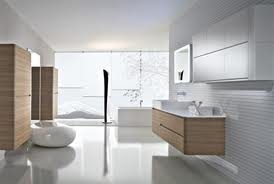Minimalist Home Design
Architects and designers who favor a less is more approach often support minimalist home design. The concept of minimalism in buildings and interior spaces calls for the use of clean lines, simple color palettes, and unadorned surfaces.
Basics of Minimalism
The core goal of minimalist home design is to break down forms and structures to their basic elements. The straightforward nature of ASIAN DESIGN, particularly classic Japanese design, has been one of the inspirations for minimalism.
Minimalist designers and architects concentrate on removing dimension from spaces and connecting the intersecting visual planes of the building. This leaves room to diligently plan out the wide open spaces of the interiors. The initial push to rediscover pure forms is now supplanted by the desire to instill a sense of calm, harmony, and spirituality in interior spaces.
Minimalism in Practice
Minimalist home design can be either modern or contemporary in nature. The unifying element should be a focus on form, color and texture, as opposed to ornamentation. Lighting in both cases tends to be industrial in design with a focus on track lights, art lamps, and accent spotlights. Modern minimalist spaces usually feature white or neutral walls with little to no trim work or window casings. The plain walls allow artwork and large accessories to take center stage. Large walls of windows or glass are commonly used to create a sense of airiness and maximize natural light. A modern layout is typically open concept with simple room divisions made with furniture, bookcases, fabric, or low-rise cabinets.
Modern minimalist home design uses bold geometric forms along with polished finishes and asymmetrical balance. Texture is kept to a minimum, and form takes precedence over function. Furniture is streamlined in shape and is upholstered with fabrics or leather in neutral colors or tone-on-tone patterns. Metal accents like stainless steel or chrome are often seen on furniture pieces, hardware, or fixtures. Wood surfaces and cabinetry often receive a polished or lacquered finish over a light color of wood. Flooring is usually an easy care surface like concrete, wood, linoleum, stone, or tile.
On the other hand, contemporary minimalist home design features the same austere environment but with a softer approach to forms and lines. Sweeping curves and rounded lines take shape in room layouts, furniture, and accessories. Walls are kept neutral but with warmer shades like taupe, brown, cream, and beige. Pops of bold primary colors are often incorporated with painted accent walls, art pieces, upholstery, or rugs.
Texture is also important to creating warmth and comfort in contemporary minimalist home design. Microfiber or velour fabrics add softness to sofas and chairs while rugs feature plush, shaggy textures. Artwork is often colorful and striking, which infuses a contemporary space with energy. A minimalist contemporary design integrates the subtle textures of natural fabrics such as linen, cotton, wool, or silk.

